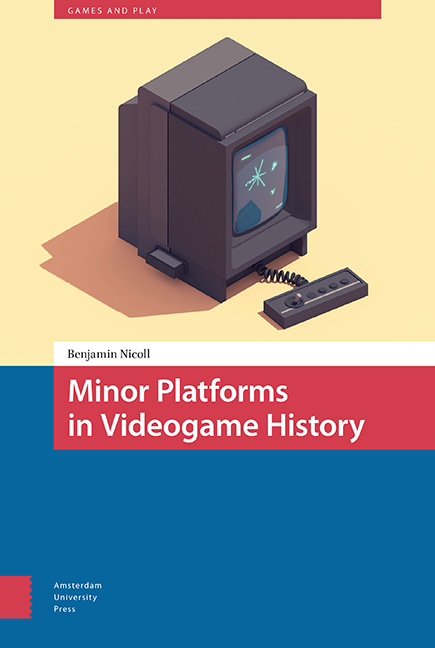Book contents
- Frontmatter
- Contents
- List of Tables and Figures
- Acknowledgements
- Introduction : Failed, Forgotten, or Overlooked? Methods for Historicizing Minor Platforms
- 1 Ways of Seeing Videogame History: The Vectrex as a Transitional Platform
- 2 Articulations of Videogame Piracy: The Zemmix as a Decolonial Platform
- 3 Domesticating the Arcade: The Neo Geo as an Imaginary Platform
- 4 A Dialectic of Obsolescence? The Sega Saturn as a Residual Platform
- 5 ‘How History Arrives’: Twine as a Minor Platform
- Conclusion: ‘Something new in the Old’
- Index
5 - ‘How History Arrives’: Twine as a Minor Platform
Published online by Cambridge University Press: 21 November 2020
- Frontmatter
- Contents
- List of Tables and Figures
- Acknowledgements
- Introduction : Failed, Forgotten, or Overlooked? Methods for Historicizing Minor Platforms
- 1 Ways of Seeing Videogame History: The Vectrex as a Transitional Platform
- 2 Articulations of Videogame Piracy: The Zemmix as a Decolonial Platform
- 3 Domesticating the Arcade: The Neo Geo as an Imaginary Platform
- 4 A Dialectic of Obsolescence? The Sega Saturn as a Residual Platform
- 5 ‘How History Arrives’: Twine as a Minor Platform
- Conclusion: ‘Something new in the Old’
- Index
Summary
Abstract
In this chapter, I discuss videogame history's ‘arrival’ in the present through an analysis of Twine. Twine is an HTML-based software tool for creating and playing hypertext fiction. Twine is, perhaps, the clearest expression of what Deleuze and Guattari call a ‘minor literature’. Its practitioners actively undermine expectations of how videogames should be played, who should make them, and what kinds of narrative themes they should explore. Many of its videogames directly challenge the perceived normativity of the ‘gamer’ identity. In this way, Twine articulates an ‘archaeology of possible futures’ for videogame history. Drawing on interviews with three Twine developers, this chapter argues that Twine is best understood as a minor platform.
Keywords: Twine, minor platform, queer temporality, democratization, game engine
The question of ‘what counts’ in videogame history should not simply be answered by taking a shovel to the past and digging up marginalized subjects and objects. As Laine Nooney (2013: n.p.) argues, the question of what counts in videogame history should also involve an interrogation of ‘how history arrives’ in the present; how the dominant construction of videogame history gives shape to certain subject positions and ways of knowing or feeling. Nooney (2013: n.p.) asks, ‘[h]ow do spaces, bodies, and objects entangle to produce a historical subject—and why do we presume that this subject is a “gamer”?’. Asking these questions means paying attention to what Nooney (2013: n.p.) calls the ‘ghostly realities of privilege, access, affect, and identity that constitute the dirt from which we “excavate” media archaeology's objects’. Videogame history arrives in the present with significant wreckage piled at its feet, to borrow Walter Benjamin's metaphor. From this wreckage emerges a dominant identity (the gamer), a master narrative of videogame history (which informs said identity), a singular structure of feeling (which dictates what is thinkable, sayable, or doable in videogame culture), and institutional gatekeepers (that have power over who has access to said culture). For Nooney, videogame historians should not simply brush aside this wreckage in their search for the marginal, the overlooked, and the forgotten. Rather, they should ask how this wreckage came to be, and how it ensured that the marginal, the overlooked, and the forgotten were written out of videogame history in the first place.
- Type
- Chapter
- Information
- Minor Platforms in Videogame History , pp. 157 - 190Publisher: Amsterdam University PressPrint publication year: 2019



